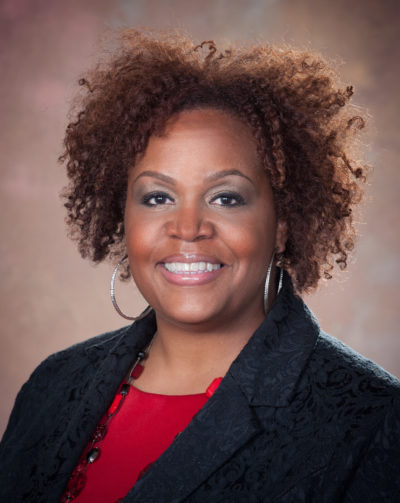Education
Donna Murray-Brown graduated in 1988 from Central State University of Dayton, Ohio, with a degree in Business Administration.














Donna Murray-Brown graduated in 1988 from Central State University of Dayton, Ohio, with a degree in Business Administration.
Donna Murray-Brown spent the first 20 years of her career in the banking industry, working with institutions such as Fifth Third Bank and Charter One (now known as Citizens Bank) which is where she first encountered philanthropy. As vice president and community reinvestment act director for Charter One, Murray-Brown led and developed strategies for the bank’s role in the Community Reinvestment Act, which helped meet credit needs in communities. As vice president, she reinforced Charter One’s relationships with over 100 community-based organizations. Murray-Brown’s initial encounter with the nonprofit industry was in a meeting with United Way, where she realized she wanted to spend her life problem-solving and brainstorming ways to help those in need. After being introduced to various figures in the nonprofit sector, Murray-Brown ultimately left banking in 2009. She served in various roles at the Michigan Nonprofit Association (MNA) before becoming president and CEO. Of the transition from the banking sector to nonprofit, Murray-Brown says that it was “the hardest decision and the best decision of [her] life.”
Prior to becoming president and CEO, Murray-Brown was director of MNA’s Metro Detroit partnership office and director of capacity-building. During this time she collaborated with the Cultural Alliance for Southeastern Michigan to promote programs for arts and culture organizations, and in 2009 led the merger negotiations of four organizations (Friends of Belle Isle, Belle Isle Botanical Society, Belle Isle Women’s Committee, and Friends of Belle Isle Aquarium) to create the Belle Isle Park Conservancy. The merger allowed these park-advocacy organizations to offer strong resources that promote all of the experiences, both educational and recreational, offered by the Belle Isle Conservancy.
In 2013, Murray-Brown became president and CEO of MNA. MNA manages various programs that work toward a better Michigan, including: Data Driven Detroit, Highway T, Michigan Campus Compact, Volunteer Centers of Michigan, and AmeriCorps VISTA.
Murray-Brown has served on a number of boards throughout Michigan and beyond. She is Chair of the board of directors for the National Council of Nonprofits, a primary resource for nonprofits across the country. She is designated chair elect for Detroit Public Television, a trusted public media source for Detroit. She serves on the board of directors for the Michigan Association of United Ways, a leadership partner that works with communities all over Michigan to support positive change. She is state commissioner for the Michigan Office of Services to the Aging, a government program that provides caregivers, community, and other support services to Michigan’s elderly. Murray-Brown is on the Nonprofit Advisory Council for Grantmakers for Effective Organizations, a group of grantmakers dedicated to building strong nonprofit communities, and member of the Dorothy A. Johnson Center for Philanthropy’s Leadership Council.
Donna Murray-Brown was interviewed regarding her insights and experiences working with Michigan’s philanthropic community and the Our State of Generosity (OSoG) partners. The following quotes specifically relate to the five organizing themes of the OSoG project.
Servant Leadership in Michigan Philanthropy
“It really is the ability to be able to provide the support system for someone else…. it’s really around how do I create the opportunity for others to thrive?, whether it be other organizations, other people.”
“I like to think that we’re always considering who we’re grooming to take our role. I always hope that that’s what we’re thinking, because the highest vulnerability to this infrastructure we have in Michigan is the leadership.”
Human, Financial, and Knowledge Resources
“I think that one of the pieces of infrastructure that we often don’t talk about is the infrastructure into people. People make institutions and make organizations run and do the great work that they do… For [MNA], it starts in kindergarten through our philanthropy education that we do. So for Michigan Nonprofit Association, we’re thinking about leadership. We’re thinking about children, all the way to young adults in college, and then we’re thinking about those in the community that can really think about their leadership in the space of community.”
Practical Wisdom
“The things that are maybe sometimes difficult about infrastructure are that it’s infrastructure. It’s so strong. It sometimes seems permanent and that it’s not as easy to evolve. It’s not as easy to see the need to evolve because it’s sometimes invisible until it breaks or until something tragic happens… That’s when it becomes very easy to understand… So the infrastructure is still there but it’s evolving and changing through the needs – for what the community needs. So I think sometimes it’s a little hard to make those adjustments. Sometimes they’re painful but I think they’re necessary and I think that’s what makes it challenging… The idea is that we have all made a commitment to the betterment of the state of Michigan and this infrastructure is included in that, that we will acquiesce when we need to, and we will move forward together when we need to.”
“It’s a notion of understanding each other and being able to be vulnerable when you can be vulnerable, because leadership is a lonely spot. Leadership is a place where it’s really challenging to say, “I need help.” Knowing that you do have a group that you can go to to be vulnerable, I think, makes us stronger, actually – which has been especially rewarding for me.”